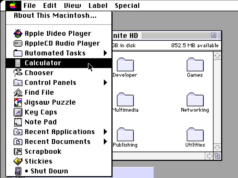
When you consider how much pressure there is every January to reassess your life and look ahead to what’s next, it’s no wonder this is a big time for people weighing a career change. Searching for a new gig might look a little different than last time you tried it, thanks to two new job-searching features on LinkedIn.
Broadening your job search
Starting today, you can search for open jobs with two more features on LinkedIn, which the company says are meant to help you broaden your search to include roles you might not have considered and find a potential spot at a company with values and perks that align with your personal needs. Here’s what the features are:

Credit: Lindsey Ellefson/LinkedIn
Job collections curate jobs across a variety of categories, like “clean energy” and “startups,” to match up with your values, interests, and overall job preferences. The Collections feature is housed in the Jobs tab and will let you group jobs by whether they offer remote work, have good parental leave policies, or focus on sustainability, for instance. You can also browse job within specific industries, such as healthcare, defense and space, and pro sports.
Preference features give you the ability to add more preferences to your job search, like location type (remote, hybrid, or on-site), full- or part-time or contract employment, or pay preferences. Jobs matching your preferences will be highlighted in green on the job postings. Preferences now have their own page, too, so you can manage all of this (plus your job alerts) in one place.
The Preferences feature is also where you’ll be able to manage your “open to work” status and privately signal to recruiters that you’re potentially available.
How the new LinkedIn features actually work
In November and December, LinkedIn conducted research with Censuswide, surveying 1,013 working professionals in the U.S. and over 2,500 worldwide, finding that 85% are considering changing jobs—which is up 27% from the data released last year. That’s … a lot of people, which means a lot of competition. (Data also shows that people are submitting job applications more, at about a 16% increase per job.)
I played around with the new features on my account this morning after the 9 a.m. rollout. In the collections tab, you can select from hospitality, media, biotech, or a bunch of other industries, so I hit “gaming” to see what would be recommended to me. My profile is all about how I’m a journalist with solid communication skills, so I was shown copywriting and research roles which, true enough, I would never have run across in an actual job hunt otherwise. In fact, in the non-profit, retail, and female-founded categories, I was also served up writing and writing-adjacent jobs, so this feature is actually pretty useful. In a hypothetical job-hunting scenario, I’d almost certainly be tunnel-visioned into looking for “journalism” jobs and wouldn’t have noticed open technical writer, brand writer, or grant writer positions that I’m actually qualified for.
Since LinkedIn has long allowed users to adjust job seeking preferences by type and pay, there wasn’t much of a change to be found there, but I did change my “pay” preference to see if it would be reflected in job postings that were shown to me. Jobs matching my various preferences showed easy-to-spot green highlights, which I did appreciate.
Overall, these features can help you open up to jobs you wouldn’t have found, but they’re just a small part of a bigger search. There are still other settings to calibrate—like your location—and things to consider outside of the realm of LinkedIn. If you’re looking for a new position, incorporate these features, but also take some time to do offline work around what it is you really want. You can retool Maslow’s trusty old hierarchy of needs, for instance, to assess your current job, how it meets your needs, and what your ideal job would look like. Then, set an action plan for the actual hunt, setting goals, tracking progress, and checking in with yourself as you apply and interview to be sure you’re always on track to finding the right job. These new tools will help to an extent, but you still have a lot of work to do yourself.








